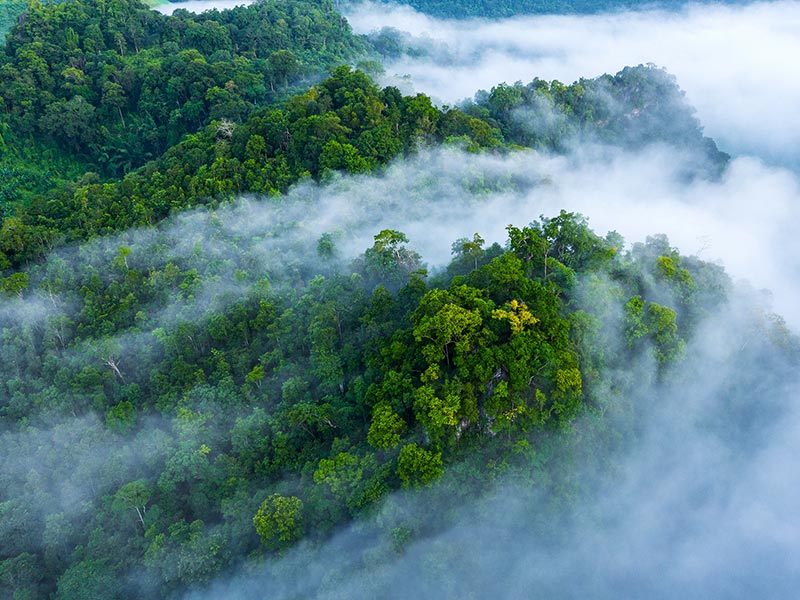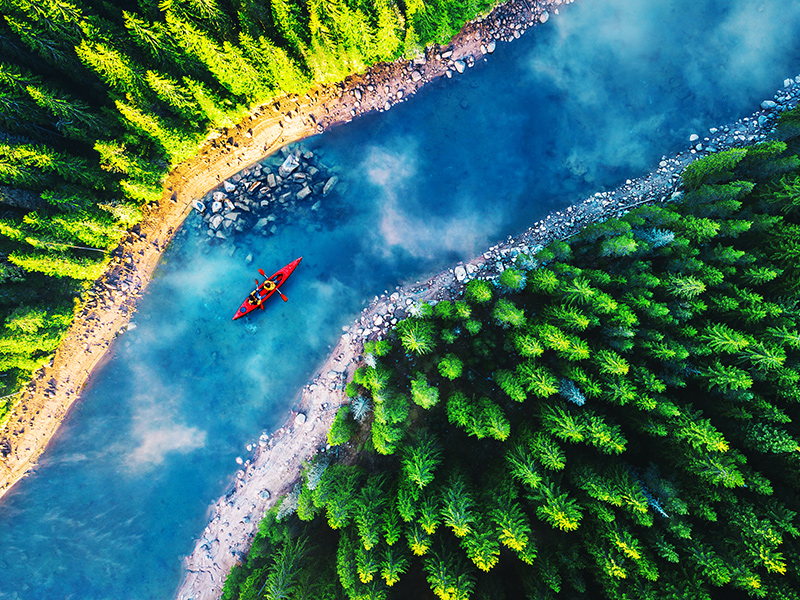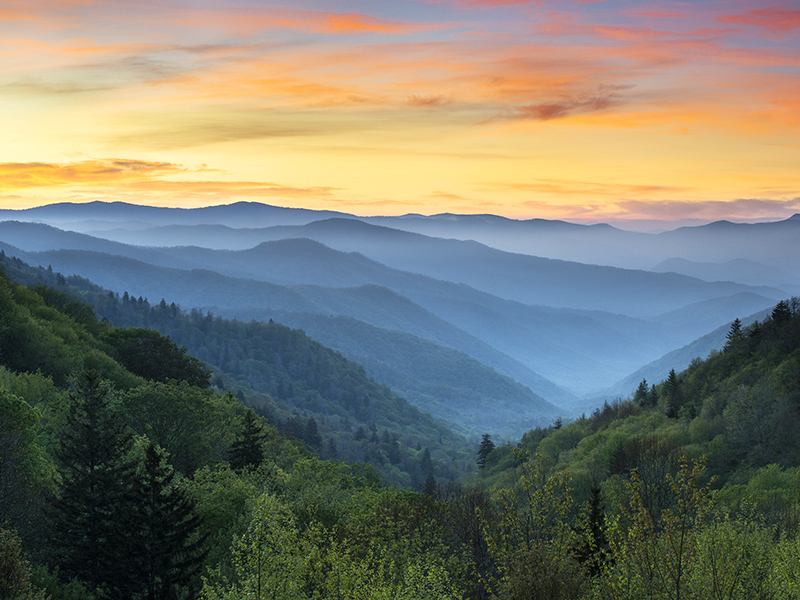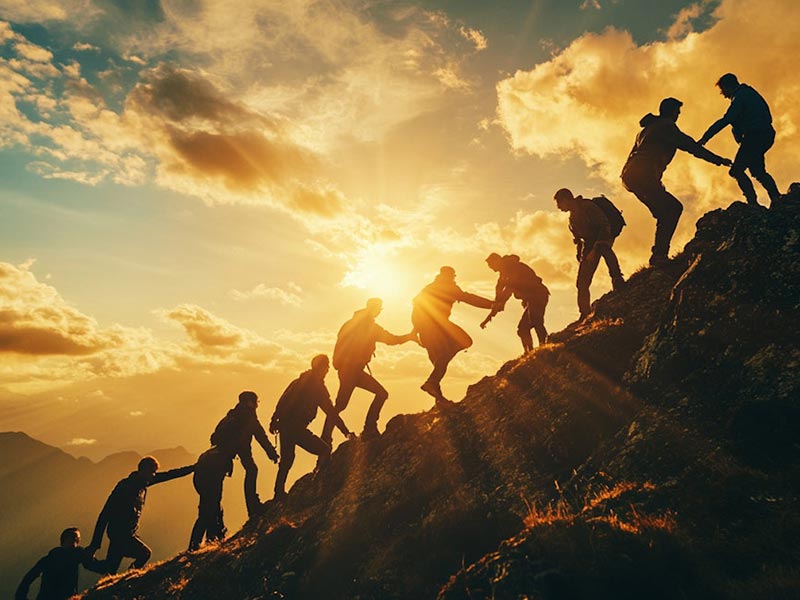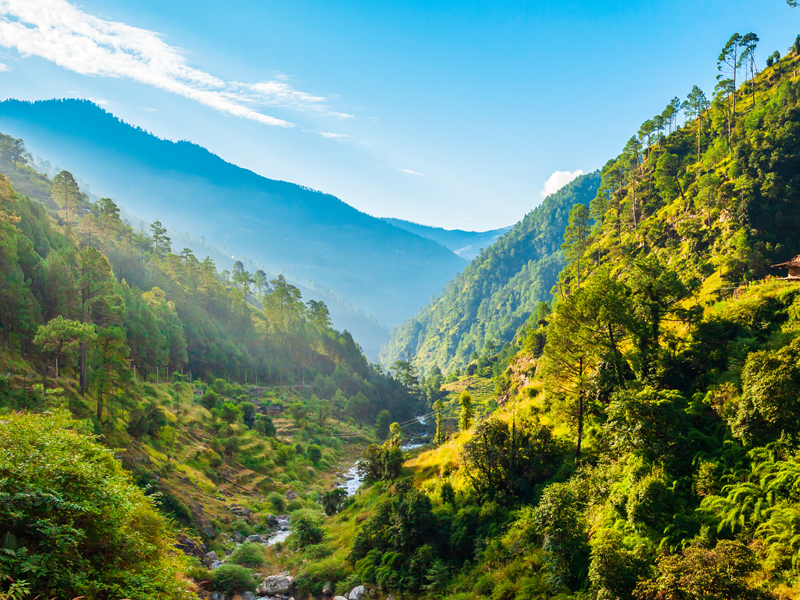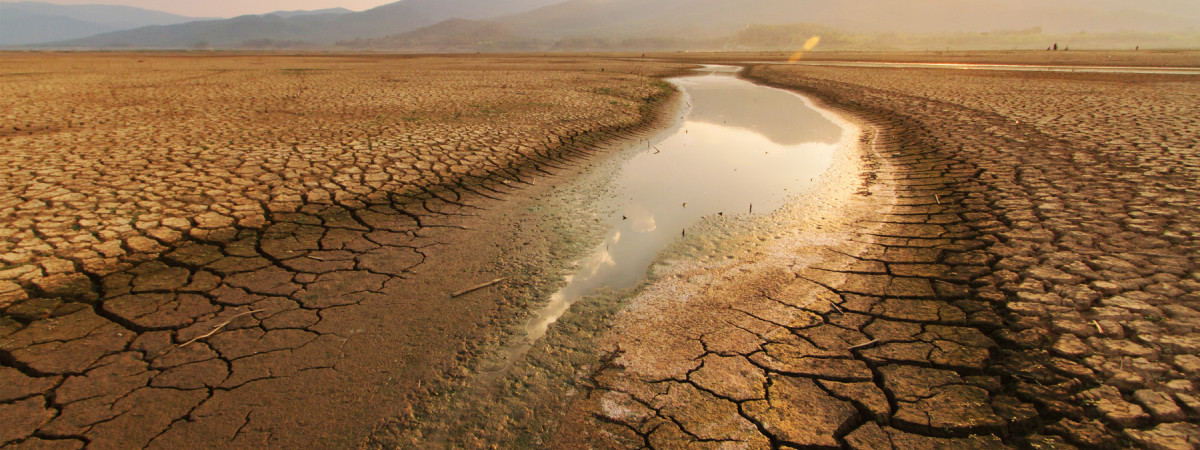
Authors
-
Anna Iles
Former Associate Director, Transformation, BSR
-

Director, Climate and Nature, BSR
-
Erin Leitheiser
Former Associate Director, Nature, BSR
New guidance from the Taskforce for Nature-related Financial Disclosure and the Science Based Targets Network (SBTN) is bringing an increased focus on the materiality of freshwater. Interventions to make water use sustainable bring difficult trade-offs for businesses and communities. Will economies need to reach a crisis point to galvanize support for interventions? Or can ambitious solutions and collaborations redress the balance in time?
BSR’s Anna Iles talks to Tim Smedley, who traveled the world researching water scarcity, for his new book The Last Drop: Solving the World’s Water Crisis. Additionally, the Nature team provides key actions businesses can take to identify and address their impacts and dependencies on water and to understand their water-related risks.
Currently, 17 companies are piloting a methodology by the SBTN to set science-based freshwater targets. Why should businesses pay attention?
Water scarcity is knocking on the door of a lot of countries that aren’t expecting it. The World Resources Institute published a list of 25 countries facing extremely high water stress, and Belgium came higher than Syria. It’s not that Belgium doesn’t get enough rain: it doesn’t capture it when it falls. Like The Netherlands, it was designed on the drainage principle of sending all the water out to sea as fast as possible to avoid flooding, and that worked very well for a time. But now, as rainfall patterns change, they need to hold on to some of it.
Then there’s groundwater depletion. Unsustainable water use means aquifers dry out. In the US, aquifers supplying 90% of the nation’s water are being depleted. Meanwhile, one of its largest reservoirs, Lake Powell, is losing a cubic kilometer of water a year to evaporation, while its inflow is decreasing, due to less reliable snow caps. Mega dams and reservoirs will soon be stranded assets.
Are you saying the main driver of water risk is mismanagement—particularly in light of our changing weather patterns?
That’s right. A warmer climate causes more water to evaporate, from water bodies (including major reservoirs) and the soil. The air holds more moisture, and so the rain falls more heavily—and causes floods because it hits dry earth. Droughts have increased, which makes water management harder everywhere.
But much of the problem was man-made already. Many mega dams have past their 50 year intended timeframes. While pollution makes all these things harder, from soil run-off and microplastics to forever chemicals and human sewage. Polluted water is just as bad as no water.
The US Federal Government has stepped in to restrict water usage. Is more stringent legislation needed?
Legislation works for sustainability, but it doesn't necessarily work for people.
In Australia, the Government has been buying water back from farmers for the past decade to keep the River Murray flowing. In 2010 it no longer reached the sea due to over-abstraction: now it does. It’s a very successful policy but also hugely unpopular because it’s taking water from farmers. So we need to start having more honest conversations politically about the true value of water.
This raises the question of trade-offs between the private sector’s water demand and that of natural systems and communities. Analysts say tech giants’ water use is growing by 20-35% due to AI research and development. What is the way forward?
Water use for technology is set to increase and should certainly factor into business plans. You need water to cool servers and energy plants alike: French energy supplier EDF is forced to shut or scale down nuclear plants almost every summer due to water shortage. We need to invest in alternatives, like air cooling.
More sustainably, we need to harvest rainwater, and recycle greywater, from toilet to tap. There are off-grid solutions too: a company in Arizona is making ‘hydropanels’ that use solar thermal to draw water from moisture in the air. If it works in the desert air of Arizona, it can work anywhere.
Another way forward is public-private partnerships around watersheds, such as the Nature Conservancy’s Water Funds. It’s not currently the private sector's legal responsibility to maintain water, even if they depend upon it. Partnerships like these bring in private sector funding to update common infrastructure, and then public authorities maintain it afterward.
I also see impacts from sustainability standards like the Better Cotton Initiative and the Alliance for Water Stewardship, plus the leadership of big buyers. For instance, a major clothing brand recently announced it’s targeting a 40% reduction in water use among its suppliers. If you can’t deliver on that, you’re out. Buyers have huge influence.
Such policies have big implications for suppliers and their livelihoods.
Yes, there are clear Just Transition implications here. But current practices affect livelihoods too. The global crop system is currently based on moving from one region to the next. As one dries out, you start growing in another. There are huge Saudi-owned or invested farms in Arizona now, but Arizona also has dwindling groundwater reserves. The water will run out, and the investors will move on. The question is, how do you plan for a future without agribusiness dollars?
Are there solutions that work both for people and for natural systems?
Yes, there are—including indigenous practices. Peru—which currently grows the majority of the world’s out-of-season asparagus in the arid Ica region—is reviving a traditional irrigation method, part of a water-centric worldview called “Poza”. They flood fields such that it trickles into the aquifer below in a kind of closed-loop model.
In mainstream agriculture, no-till (effectively not ploughing) works on a similar principle. This mimics a natural system by enabling water to seep down into the ground and work its way back into streams and rivers. No-till approaches are much less costly and more effective than building reservoirs—and benefit farmers by decreasing fuel and labor costs.
A similar approach is Managed Aquifer Recharge, where you pump water back down into aquifers.
What’s the most important solution in your view?
Without a doubt, nature-based restoration and, where appropriate, rewilding. We are 100% reliant on our natural water cycle. One clear example is our approach to flood control. By moving away from grey infrastructure and restoring floodplains and wetlands, we get co-benefits from flood mitigation to carbon in the soil, groundwater recharge and water purification. Where I live, in the UK, they’re reintroducing beavers after 400 years: it turns out they’ll restore water courses for us.
We need to remember where water comes from. We thought we could decouple ourselves from natural systems. That was always hubris. We are fully reliant on natural systems.
Actions for Business
BSR supports businesses to develop positive relationships with land, freshwater, and marine systems in both their operations and value chains. We help companies to identify and address their impacts and dependencies on water and to understand their water-related risks, and how these intersect with climate change. Here are some key recommendations:
1) Understand your impacts and dependencies
-
Using a double materiality approach, assess your nature impacts and dependencies, including freshwater, and understand your reliance and impacts on freshwater quality and quantity. This should be done in alignment with the Taskforce for Nature-related Financial Disclosure and the Science-Based Targets for Nature, and consider all significant pollutants, from microplastics to chemicals.
-
Conduct a water risk analysis for the company and its supply chain, collecting quantitative primary and secondary data and appropriately including impacts for communities and ecosystems in the analysis.
-
Prioritize locations in your supply chain based on gathered data, incorporating stakeholder perspectives to ensure an equitable lens is applied to location identification.
-
Ensure you consider freshwater ecosystems as an important landscape in nature-related work.
-
Apply foresight techniques to understand how a changing water cycle might impact supply chains.
-
Monitor emerging policy and recommendations, such as the EU’s proposed Blue Deal.
2) Invest in shared nature-based solutions
-
Map identified risks to science-based interventions to employ the correct solutions in the right landscapes (e.g., do not try a ‘one size fits all’ approach).
-
Explore and invest in nature-based solutions (NbS) for long-term supply chain resilience, taking advantage of win-wins towards net-zero goals.
-
Explore the ramifications of proposed solutions for all stakeholders.
-
Develop and engage in watershed and watercourse-based collaborations to find shared solutions for restoration and conservation.
-
Adopt a human rights, environmental justice and community co-creation approach to water management.
3) Reduce water use across your value chain.
-
Build awareness of embedded water, through water consumption labels and price restructuring.
-
Consider water sources, differentiating between groundwater reserves and recycled greywater.
-
Invest in waterless technologies and reduce water use within your value chain. This includes developing products and manufacturing systems with minimal to no water dependency.
-
Develop and utilize circular water systems within production and manufacturing facilities throughout the value chain.
-
Consider divesting from business lines or activities that are overly reliant or disproportionately utilizing freshwater and freshwater ecosystems.
For more information on how to develop ambitious nature-based strategies and solutions toward your sustainability objectives, contact BSR’s Nature team.
Topics
Let’s talk about how BSR can help you to transform your business and achieve your sustainability goals.
